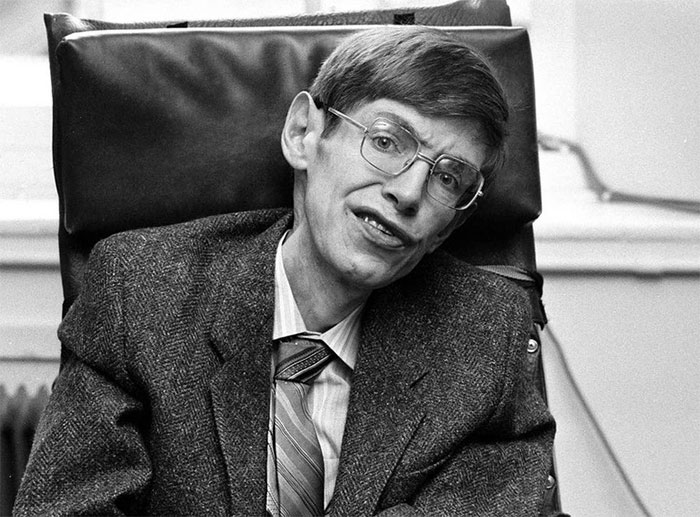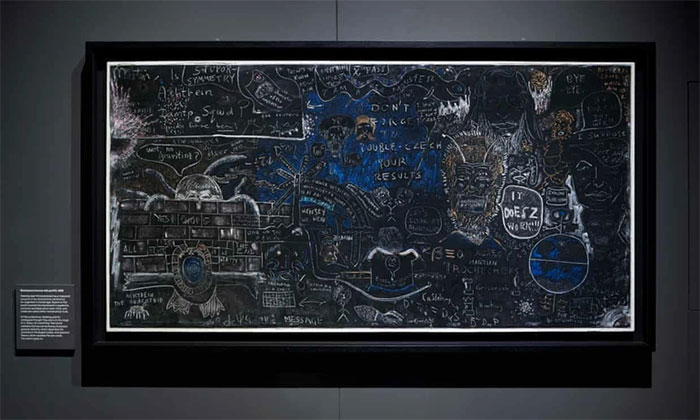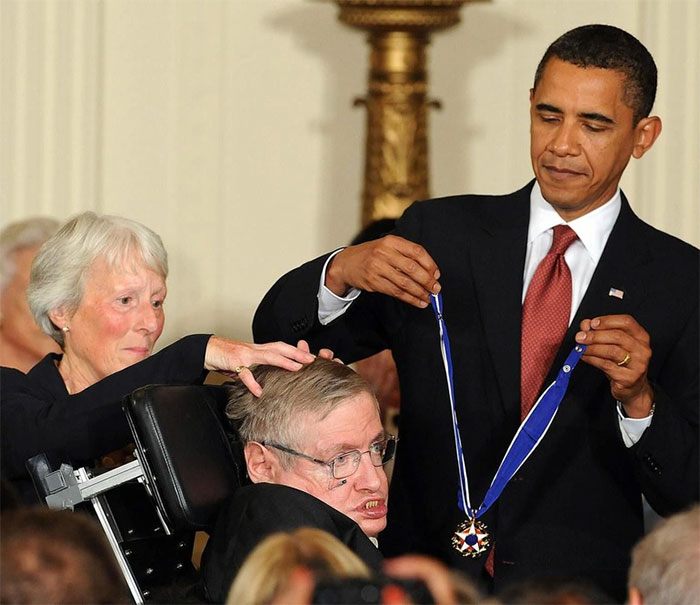What is the “Exxon Gravity”? Who is the “Mars Man” with the wild beard, and what does the squid hanging on the wall signify? All will soon be revealed.
Devoting his life to finding answers to the universe’s most puzzling questions, “the physics legend” Stephen Hawking left behind a mystery of his own in his old office: a blackboard filled with sketches and scribbled notes.

“Physics legend” Stephen Hawking dedicated his life to the scientific world, leaving behind invaluable knowledge. (Photo: AP).
On display at the Science Museum in London, the blackboard resembles both a complex work of art and a relic of physics history, one that may require more time to fully understand.
Reportedly, this blackboard dates back to 1980, used by Hawking to jot down notes alongside other physicists during a conference on supergravity and superstring theory at the University of Cambridge in England.
While attempting to formulate a “theory of everything” that encompasses all existing phenomena in the universe—essentially a set of equations that combine the principles of general relativity and quantum mechanics—Hawking’s colleagues filled the blackboard with a series of completed equations, interspersed with cryptic puns and doodles, including mysterious illustrations.
Many bizarre theories were mentioned for the first time, such as “stupor symmetry,” while a prominent drawing of a disheveled “Mars Man” at the center of the blackboard leaves viewers perplexed. Additionally, there is an image of a squid climbing over a brick wall, and a box labeled “Exxon Supergravity.”

Could Stephen Hawking’s blackboard filled with doodles contain a message that changes humanity?
“I am certainly going to try to extract their interpretations, but I can’t be sure I have enough knowledge,” said Juan-Andres Leon, who managed Stephen Hawking’s office and was also one of the witnesses who attended the conference over 40 years ago.
“People don’t have many glimpses into Stephen Hawking’s daily life, and because he was a theoretical physicist, it was very difficult to convey what he was thinking,” Leon admitted.
Previously, some speculated that Hawking and his colleagues merely used the blackboard as a distraction, attempting to obscure important knowledge with a series of false equations or irrelevant notes. Others suggested that they viewed it as a mere pastime, with the information holding no real significance.
Leon hopes that once the blackboard is made public, the great minds of the world in mathematics and physics may uncover the answers to what Hawking subtly communicated to humanity through the mysterious notes recorded.
The blackboard is just one of over 700 items categorized by staff at the Science Museum after retrieving them from Hawking’s office. They have been cataloged since they arrived last summer. In the meantime, all these items will be photographed and described for all museum visitors.

Stephen Hawking receiving the Presidential Medal of Freedom from President Barack Obama in 2009.
Physicist Stephen Hawking (January 8, 1942 – March 14, 2018), passed away at the age of 76. He was also a cosmologist, astronomer, mathematician, and the author of many books, including “A Brief History of Time,” which sold over 10 million copies. He was diagnosed with ALS (amyotrophic lateral sclerosis), a neurodegenerative disease also known as Lou Gehrig’s disease, which typically leads to death within a few years.
It was in 1963 when Stephen was just 21 years old and was believed to have only a few years left to live. However, through extraordinary determination, “the king of physics” not only survived but dedicated his entire life to the scientific world, leaving behind invaluable knowledge.
Stephen Hawking was one of the first to demonstrate how quantum fluctuations—very small variations in the distribution of matter—could affect the expansion of galaxies in the universe. His name became known worldwide in 1970 when he and physicist Roger Penrose published their research.


















































